WHI2 / YOR043W Overview
- Standard Name
- WHI2 1
- Systematic Name
- YOR043W
- SGD ID
- SGD:S000005569
- Feature Type
- ORF , Verified
- Description
- Negative regulator of TORC1 in response to limiting leucine; suppresses TORC1 activity with binding partners Psr1p/Psr2p, acting in parallel with SEACIT; regulates cell cycle arrest in stationary phase; inhibits Ras-cAMP-PKA regulation of apoptosis during nutrient depletion; required with Psr1p for activation of the general stress response; role in rapamycin-induced mitophagy; localizes to the cell periphery; human tumor suppressor and Whi2-like protein KCTD11 functionally complements the null 2 3 4 5 6 7 8
- Name Description
- WHIskey 9
- Comparative Info
-
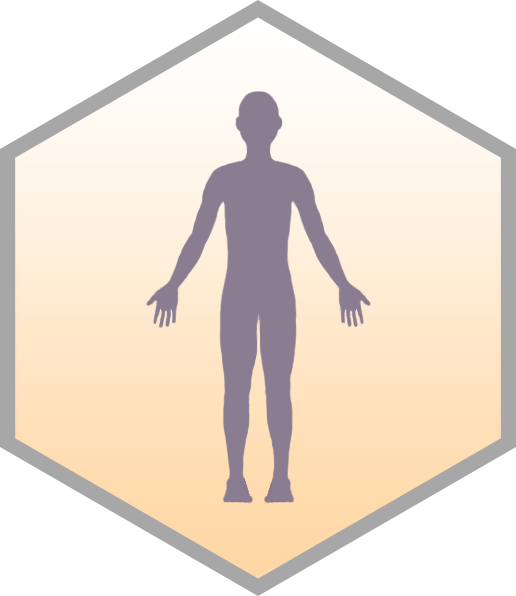
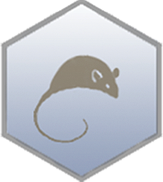
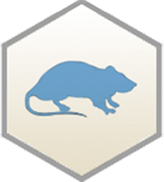

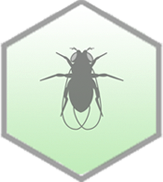
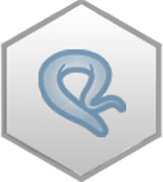
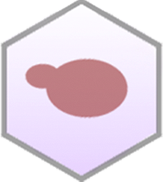
Sequence
The S. cerevisiae Reference Genome sequence is derived from laboratory strain S288C. Download DNA or protein sequence, view genomic context and coordinates. Click "Sequence Details" to view all sequence information for this locus, including that for other strains.
- Summary
- WHI2/YOR043W is located on the right arm of chromosome XV between SNR62 C/D box snoRNA and IRC23 multidrug resistance protein; coding sequence is 1461 nucleotides long with 15 SNPs, 8 of which cause amino acid polymorphisms
Analyze Sequence
S288C only
BLASTN | BLASTP | Design Primers | Restriction Fragment Map | Restriction Fragment Sizes | Six-Frame Translation
S288C vs. other species
BLASTN vs. fungi | BLASTP at NCBI | BLASTP vs. fungi
S288C vs. other strains
Protein
Basic sequence-derived (length, molecular weight, isoelectric point) and experimentally-determined (median abundance, median absolute deviation) protein information. Click "Protein Details" for further information about the protein such as half-life, abundance, domains, domains shared with other proteins, protein sequence retrieval for various strains, physico-chemical properties, protein modification sites, and external identifiers for the protein.
- Summary
- Whi2p is 486 amino acids long, low in abundance; contains disordered regions; ubiquitinylated on K371, phosphorylated on 14 residues
- Length (a.a.)
- 486
- Mol. Weight (Da)
- 55336.6
- Isoelectric Point
- 5.96
- Median Abundance (molecules/cell)
- 3153 +/- 985
Alleles
Curated mutant alleles for the specified gene, listed alphabetically. Click on the allele name to open the allele page. Click "SGD search" to view all alleles in search results.
View all WHI2 alleles in SGD search
Gene Ontology
GO Annotations consist of four mandatory components: a gene product, a term from one of the three Gene Ontology (GO) controlled vocabularies (Molecular Function, Biological Process, and Cellular Component), a reference, and an evidence code. SGD has manually curated and high-throughput GO Annotations, both derived from the literature, as well as computational, or predicted, annotations. Click "Gene Ontology Details" to view all GO information and evidence for this locus as well as biological processes it shares with other genes.
- Summary
- Protein phosphatase activator involved in the general stress response; role in mitophagy, endocytosis and organization of the actin cytoskeleton; localizes to the cell periphery
View computational annotations
Molecular Function
- Manually Curated
- enables protein phosphatase binding (IDA)
Biological Process
- Manually Curated
- involved in actin filament organization (IMP)
- involved in cellular hyperosmotic response (IMP)
- involved in cellular response to amino acid starvation (IGI, IMP)
- involved in cellular response to heat (IMP)
- involved in cellular response to oxidative stress (IMP)
- involved in endocytosis (IMP)
- involved in mitophagy (IMP)
- involved in negative regulation of TORC1 signaling (IGI, IMP)
- involved in positive regulation of G1 to G0 transition (IMP)
- involved in positive regulation of transcription by RNA polymerase II (IMP)
Cellular Component
- Manually Curated
- located in cell periphery (HDA)
Complex
Macromolecular complex annotations are imported from the Complex Portal. These annotations have been derived from physical molecular interaction evidence extracted from the literature and cross-referenced in the entry, or by curator inference from information on homologs in closely related species or by inference from scientific background.
Phenotype
Phenotype annotations for a gene are curated single mutant phenotypes that require an observable (e.g., "cell shape"), a qualifier (e.g., "abnormal"), a mutant type (e.g., null), strain background, and a reference. In addition, annotations are classified as classical genetics or high-throughput (e.g., large scale survey, systematic mutation set). Whenever possible, allele information and additional details are provided. Click "Phenotype Details" to view all phenotype annotations and evidence for this locus as well as phenotypes it shares with other genes.
- Summary
- WHI2/YOR043W is a non-essential gene; null mutants are viable and associated with a variety of mutant phenotypes that significantly impact cellular functions and overall organismal health. Mutants lacking this gene exhibit decreased resistance to acidic pH levels, which may hinder their survival in certain environments. The morphology of the actin cytoskeleton is abnormal in these mutants, potentially affecting cellular structure and movement. Additionally, there is an increased rate of apoptosis, suggesting that the absence of WHI2 may lead to heightened programmed cell death. Autophagy processes are also abnormal, which could impair the cell's ability to recycle components and manage stress. These mutants display a decreased cell size and an increased deposition of chitin, indicating alterations in cell wall composition. Their chronological lifespan is reduced, and colony size is smaller, reflecting diminished growth and reproductive capacity. Resistance to desiccation is decreased, making them more vulnerable to dry conditions. Furthermore, endocytosis is impaired, which may affect nutrient uptake. The entry into the G0 stationary phase is abnormal, disrupting the normal lifecycle of the cells. Filamentous growth is decreased, and invasive growth is absent, suggesting limitations in their ability to adapt to certain growth conditions. Heat sensitivity is increased, indicating a greater susceptibility to elevated temperatures. Resistance to hyperosmotic stress and oxidative stress is also decreased, further compromising their resilience. Additionally, these mutants show decreased resistance to starvation and reduced telomere length, which may impact cellular aging and stability. The morphology of mitochondria is abnormal, and mitophagy is decreased, potentially affecting energy production and cellular health. Vacuolar morphology is also abnormal, which could disrupt cellular storage and waste management. Overall, while WHI2 mutants remain viable, their overall fitness and adaptability are significantly impaired, leading to decreased viability in various environmental conditions.
Classical Genetics
- null
- actin cytoskeleton morphology: abnormal
- apoptosis: increased
- autophagy: abnormal
- chemical compound accumulation: increased
- colony size: decreased
- endocytosis: decreased
- entry into G0 (stationary phase): abnormal
- heat sensitivity: increased
- hyperosmotic stress resistance: decreased
- innate thermotolerance: decreased
- metal resistance: decreased
- metal resistance: increased
- mitochondrial genome maintenance: abnormal
- mitochondrial morphology: abnormal
- mitophagy: decreased
- prion formation: increased
- protein/peptide modification: increased
- resistance to chemicals: decreased
- resistance to chemicals: increased
- viability: decreased
- overexpression
- unspecified
- null
- acid pH resistance: decreased
- acquired thermotolerance: decreased
- cell size: decreased
- chemical compound accumulation: decreased
- chemical compound accumulation: increased
- chemical compound excretion: increased
- chitin deposition: increased
- chronological lifespan: decreased
- competitive fitness: decreased
- competitive fitness: increased
- desiccation resistance: decreased
- endocytosis: decreased
- filamentous growth: decreased
- haploproficient
- heat sensitivity: increased
- innate thermotolerance: decreased
- invasive growth: absent
- metal resistance: decreased
- oxidative stress resistance: decreased
- protein activity: increased
- resistance to chemicals: decreased
- resistance to chemicals: increased
- resistance to chemicals: normal
- starvation resistance: decreased
- stress resistance: decreased
- stress resistance: increased
- telomere length: decreased
- toxin resistance: decreased
- utilization of carbon source: absent
- vacuolar morphology: abnormal
- vegetative growth: abnormal
- viable
Large-scale Survey
Disease
Disease Annotations consist of three mandatory components: a gene product, a term from the Disease Ontology (DO) controlled vocabulary and an evidence code. SGD provides manually curated DO Annotations derived from the literature. Click "Disease Details" to view all Disease information and evidence for this locus as well as diseases it shares with other genes.
- Summary
- Yeast WHI2 is homologous to human KCTD7, and has been used to study progressive myoclonus epilepsy 3
Manually Curated
Interaction
Interaction annotations are curated by BioGRID and include physical or genetic interactions observed between at least two genes. An interaction annotation is composed of the interaction type, name of the interactor, assay type (e.g., Two-Hybrid), annotation type (e.g., manual or high-throughput), and a reference, as well as other experimental details. Click "Interaction Details" to view all interaction annotations and evidence for this locus, including an interaction visualization.
- Summary
- Whi2p interacts physically with proteins involved in transcription; WHI2 interacts genetically with genes involved in transcription
560 total interactions for 392 unique genes
Physical Interactions
- Affinity Capture-MS: 17
- Affinity Capture-RNA: 7
- Affinity Capture-Western: 3
- Co-purification: 1
- Proximity Label-MS: 1
- Two-hybrid: 7
Genetic Interactions
- Dosage Rescue: 7
- Negative Genetic: 418
- Phenotypic Enhancement: 11
- Phenotypic Suppression: 11
- Positive Genetic: 37
- Synthetic Growth Defect: 24
- Synthetic Haploinsufficiency: 1
- Synthetic Lethality: 5
- Synthetic Rescue: 10
Regulation
The number of putative Regulators (genes that regulate it) and Targets (genes it regulates) for the given locus, based on experimental evidence. This evidence includes data generated through high-throughput techniques. Click "Regulation Details" to view all regulation annotations, shared GO enrichment among regulation Targets, and a regulator/target diagram for the locus.
- Regulators
- 4
- Targets
- 0
Expression
Expression data are derived from records contained in the Gene Expression Omnibus (GEO), and are first log2 transformed and normalized. Referenced datasets may contain one or more condition(s), and as a result there may be a greater number of conditions than datasets represented in a single clickable histogram bar. The histogram division at 0.0 separates the down-regulated (green) conditions and datasets from those that are up-regulated (red). Click "Expression Details" to view all expression annotations and details for this locus, including a visualization of genes that share a similar expression pattern.
Summary Paragraph
A summary of the locus, written by SGD Biocurators following a thorough review of the literature. Links to gene names and curated GO terms are included within the Summary Paragraphs.
Last Updated: 2025-03-27
Literature
All manually curated literature for the specified gene, organized into topics according to their relevance to the gene (Primary Literature, Additional Literature, or Review). Click "Literature Details" to view all literature information for this locus, including shared literature between genes.